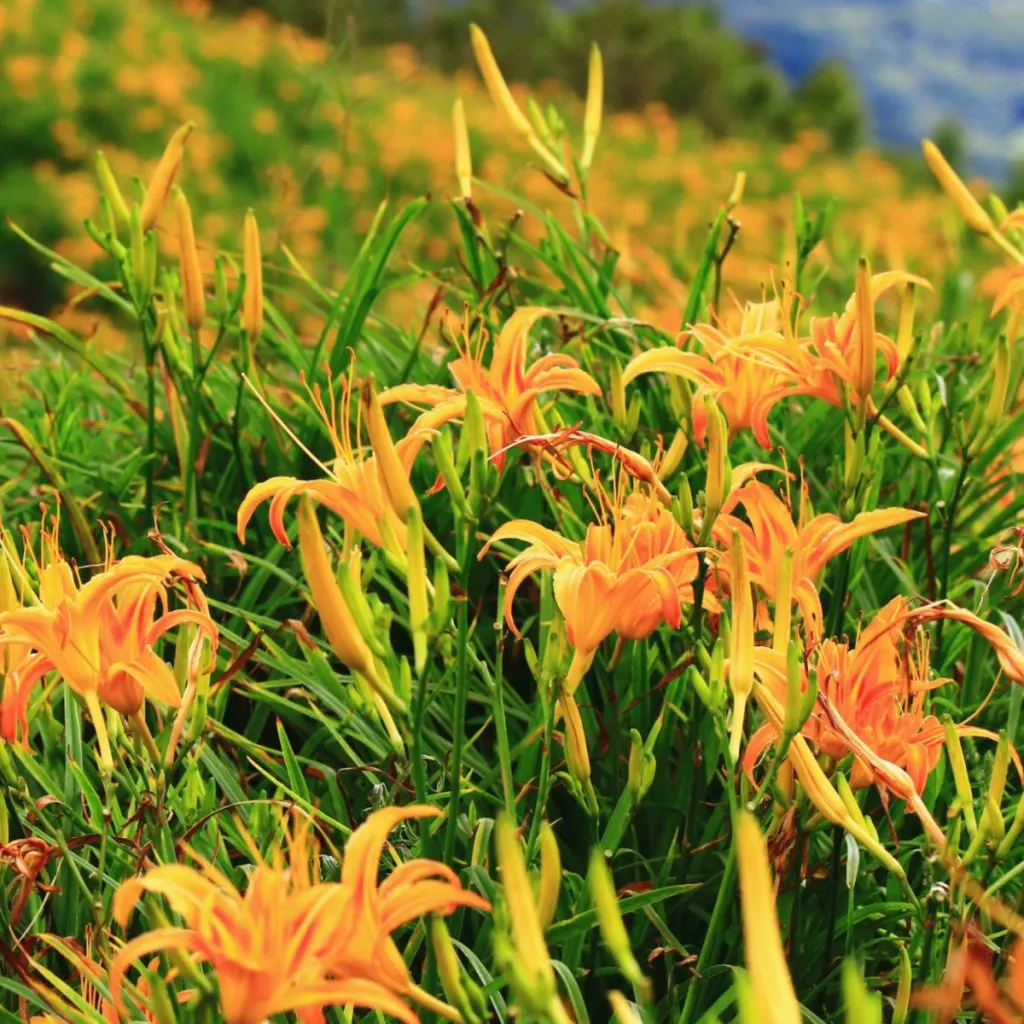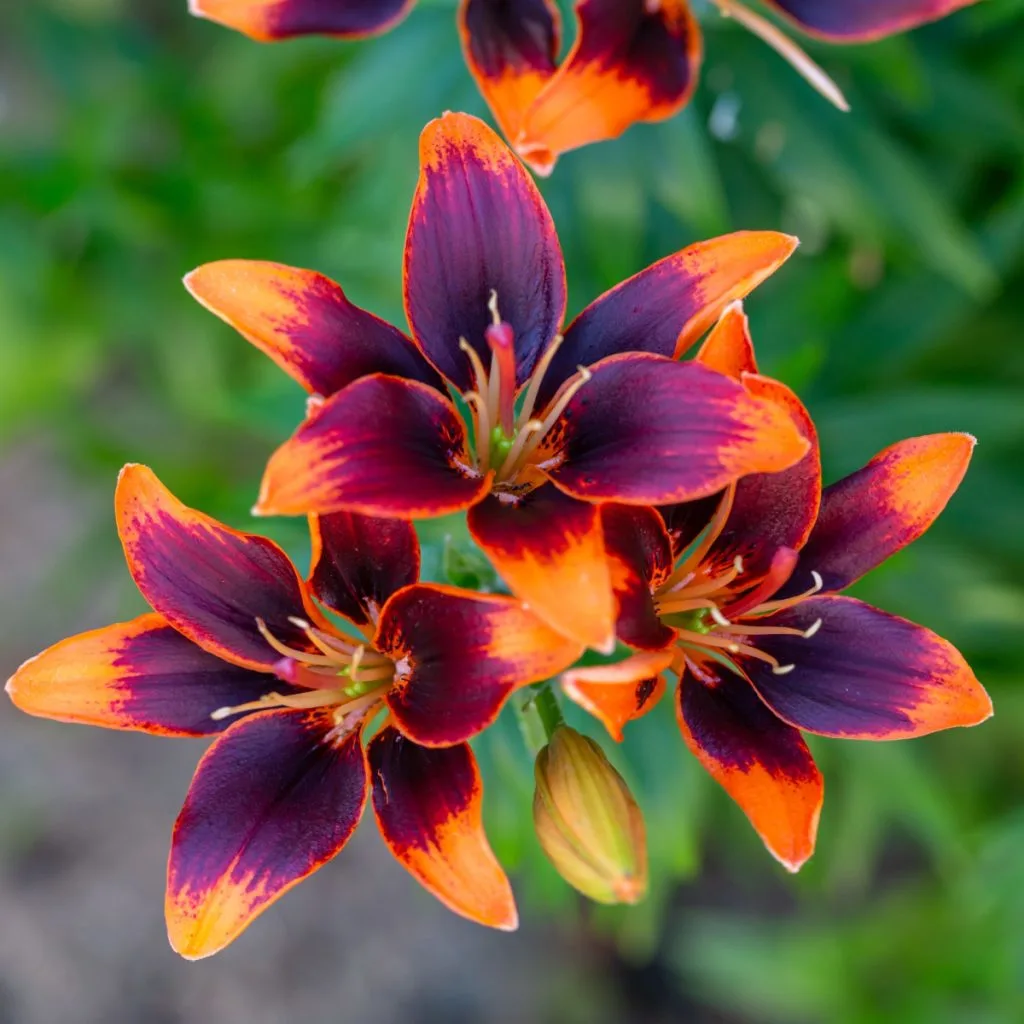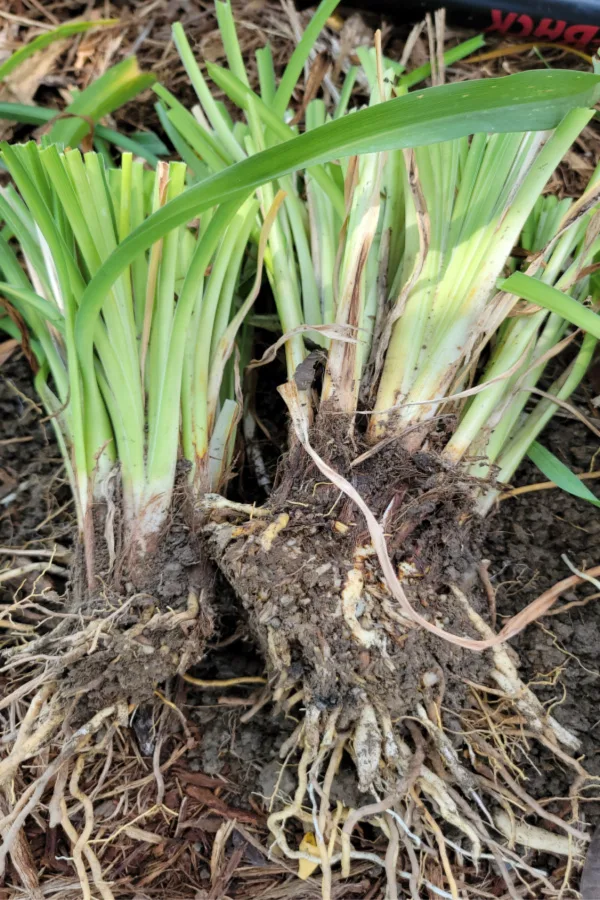If there is one perennial plant that we get more emails and questions about in the middle of summer, it is daylilies – or more to the point – what to do with these popular plants after they bloom!
Daylilies are a fantastic choice for the landscape. They are low-maintenance, hardy, and extremely drought resistant. Even better, they are also quite easy to split and divide into new plants. But as these beautiful plants near the end of their summer blooming cycle, many gardeners are at a loss for the best way to care for them after the blooms begin to die off.
Let’s face it, after they finish blooming, daylilies can begin to look pretty unsightly in flowerbeds. Their once bright green foliage begins to dull and look tattered and rough. And as their fading bloom stems start to fade and brown off, the plants look almost as if they are done for the season.

Should they be cut back? Is it safe to divide them in the summer months if they have grown too big? Is there any chance to bring them back and maybe even have them bloom again in the fall?
All certainly are great questions when it comes to dealing with daylilies after they bloom – which is exactly why today’s article will cover all of that and then some to not only keep your daylilies healthy and strong – but maybe even to help them flower once more before winter arrives!
What To Do With Daylilies In The Summer – After They Bloom!
From the common Orange daylily to the ever popular Stella D’oro and the hundreds of more varieties in between, daylilies can be found in a plethora of colors, shapes and sizes.
Some varieties bloom for a single session. But many, like the Stella, can re-bloom several times through the summer. Especially if they are given a bit of extra care after they bloom.
But no matter which variety you have, summer care is important to their long-term health and vibrancy. Not only can it help foliage stay strong and beautiful through the long summer months, it also helps the plants to a better, more vigorous bloom cycle the following year.
Dealing With Fading Blooms – What To Do With Daylilies In The Middle Of Summer
After the first initial onset of blooms, it is important to remove any flowers that begin to fade past their prime. By doing this, you keep the plant’s energy focused on producing new blooms.
An entire blooming period can extend anywhere from a few weeks to as long as 45 days. It all really depends on the variety of daylily. But removing old blooms helps extend that time to the longer side – no matter which type you are growing.
Unfortunately, when old blooms stay on the plant, they continue to use resources from the plant. Resources that should and could be going to create more blooms and brighter foliage.
Removing old bloom stems can with a sharp pair of scissors, or a handy set of hand-held pruners. And those pruners can really come in handy when you start to remove daylily scapes and seed heads, which as you will see next, is very important for their long term health and blooming potential! Affiliate Product Link: Fiskars Bypass Pruning Shears 5/8” Garden Clippers
Dealing With Daylily Scapes & Seed Heads – What To Do With Daylilies In The Middle Of Summer
Now on to the seed heads or daylily scapes that daylilies shoot up after blooming. This topic can be especially important for varieties of daylilies that are able to bloom again.

Once daylilies stop their initial bloom set, they begin to form seed heads. These seed heads, or lily scapes as they are sometimes called, are not necessary for the plant’s health or growth. But they do use a tremendous amount of the plant’s resources to form and grow.
Because of this, they should be cut back to the base of the plant as soon as they appear. This, like removing spent blooms, forces the plant to use its energy on new blooms and plant strength. And, if you have re-blooming varieties like the Stella D’oro, this practice also helps create a second bloom cycle much more rapidly.
For any variety of daylily, this is also a great time to boost them with a little dose of granular fertilizer. This allows them to build up strong roots and energy for the next year or the next bloom cycle. It also helps them recover quickly from the energy lost blooming. Affiliate Product Link: Organic All Purpose 6-4-5 Fertilizer
Mid-Summer Plant Maintenance – What To Do With Daylilies In The Middle Of Summer
Are your daylilies becoming too large? Believe it or not, unlike many perennials, you can split and divide them right in the middle of summer!
If plants have become too large, this is a great way to keep them in shape and create a few new starts. When daylilies become too large and overcrowded, bloom sets begin to suffer. But splitting and dividing allows for plenty of new room, and new plants. See: Dividing Perennials In The Summer – How To Fill Your Flowerbeds For Free!

Dividing Daylilies In Mid-Summer – What To Do With Daylilies In The Middle Of Summer
Dividing daylilies couldn’t be easier. Simply dig up the plant, and divide through the roots with a sharp shovel. When dividing in the summer months, we use a sharp pair of scissors or hedge clippers to remove all of the foliage down to the base of the plant.
For starters, this foliage almost always dies off after tranplanting. So cutting it off right as you dig them up keeps your transplants from looking sad in your beds while the new growth comes on from below.
Even more importantly, cutting back that growth spurs on a faster rate of growth for the new transplant, and encourages the plant to re-leaf much quicker.
Division can be done at any time, but we always wait until our lilies have finished their first main bloom to dig up. Once the plants have been replanted, it will take about 3 to 5 weeks to start seeing some good growth come up through the crown.
In many seasons, we have had many of our mid-summer divisions and transplants flower again by fall. It’s not only a great way to keep plants manageable, but also to add new plants to your landscape. And all for free.
Here is to taking care of your daylilies this summer after they bloom. And even more, keeping them happy and healthy all year round! Happy Gardening! Jim and Mary.
Old World Garden
Jim and Mary Competti have been writing gardening, DIY and recipe articles and books for over 15 years from their 46 acre Ohio farm. The two are frequent speakers on all things gardening and love to travel in their spare time.
As always, feel free to email us at thefarm@owgarden.com with comments, questions, or to simply say hello! You can sign up for our free email list in the subscribe now box in the middle of this article. Follow us on Facebook here : OWG Facebook. This article may contain affiliate links.


